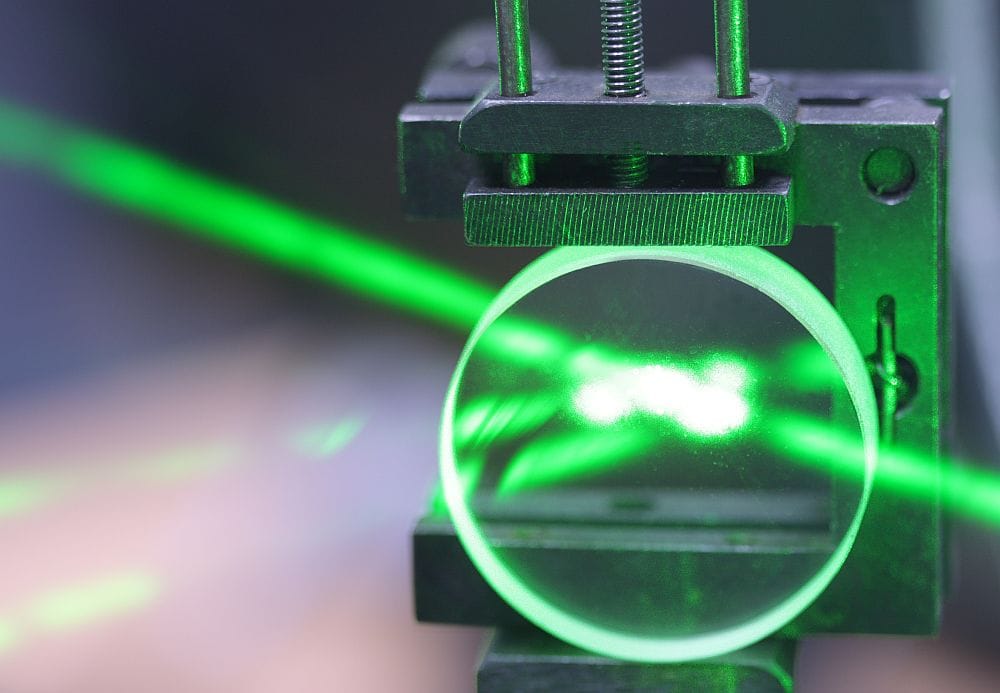
[Image above] Pink ribbon for Breast Cancer Awareness Month, which takes place in October. Credit: Angiola Harry, Unsplash
From dentistry to wound healing to disinfectants, ceramic and glass materials are used throughout the medical industry to improve treatment of patients.
The use of these materials for cancer diagnosis and therapy is a growing area of interest. Currently, cancer typically is treated through surgical removal of the tumor followed by chemotherapy and/or radiotherapy to ensure the microscopic bits of remaining cancer are destroyed. However, chemotherapy can trigger severe side effects caused by inherent off-target toxicity of the drugs, while radiotherapy can damage nearby healthy cells.
Additionally, cancer patients are susceptible to infections due to their weakened immune systems, an issue that can be exacerbated when the cancer treatments listed above cause more damage to the immune system. Antibiotic use may prevent infections, but it can also cause new concerns, such as occurrence of drug-resistant bacteria.
Thus, new methods are needed for early detection and targeted treatment of cancer.
Previously on CTT (here and here), we highlighted the use of ceramics in the emerging field of photothermal therapy, which uses electromagnetic radiation to induce localized heating within tissue to kill cancer cells. But there are many other emerging detection and therapy treatments that also use ceramics, as you can read about in a recent Journal of the Korean Ceramic Society review paper.
Researchers from The University of Hong Kong, Southern University of Science and Technology (China), University College London (U.K.), and Columbia University (U.S.) wrote the 26-page paper. It provides an overview of the main ceramics and glasses being explored for cancer detection and treatment, including their properties and possible applications.
Below are some highlights from the paper.
Ceramics in cancer diagnosis and therapy
Diagnostic functions
– Optical imaging
– Ultrasound imaging
– Computed tomography
– Magnetic resonance imaging
– Single-photon emission computed tomography
– Multimodal imaging
Therapy approaches
– Chemotherapy
– Hyperthermia
– Gene therapy
– Photodynamic therapy
– Radiation therapy
Materials for cancer diagnosis and therapy
Among the ceramics used in cancer diagnosis and therapy, the phosphate family is widely explored. Calcium phosphates are the major inorganic constituents of biological hard tissues, such as bones and teeth, and therefore offer inherent biocompatibility.
Nanostructured amorphous calcium phosphate, hydroxyapatite, and calcium-deficient hydroxyapatite are frequently used because they are easy to make from aqueous solutions using a simple precipitation method. In recent decades, tricalcium phosphate became more attractive as well due to its biodegradability.
Bioactive glasses for medical applications are mainly composed of varying proportions of silica, calcium oxide, sodium oxide, and phosphorous pentoxide. The specific properties of these glasses are often modified by controlling their synthesis at the nanometer scale. For example, compared with nonporous bioactive glasses, mesoporous bioactive glasses have much more optimal surface area and pore volume, allowing for greatly enhanced drug delivery capability, in vitro apatite mineralization, and in vitro degradation.
Doping ceramics and glasses with magnetic ions (e.g., Fe2+/Fe3+, Mn2+, Gd3+) allows the materials to be used for magnetic targeting, magnetic-induced treatment guidance, and magnetic hyperthermia.
Development of ceramic-based cancer theranostics
Theranostics (therapy + diagnostics) is a novel concept that entails the use of nanoparticles in a single system for both molecular sensing/imaging and therapy for cancer.
Though there are a few single-component nanoparticle systems that may be used for theranostics, such systems have major limitations and have not been vigorously pursued. Instead, composite or hybrid nanoparticles hold the greatest promise for cancer detection and treatment.
Mesoporous silica nanoparticle-based theranostics are one much studied system due to their potential as carriers for either imaging contrast agents or therapeutic agents. Calcium phosphates are of interest in theranostics as well because they may provide stimuli-triggered drug release resulting from pH-dependent dissolution.
Challenges and future opportunities
Though there are substantial reports on biological studies performed in vitro and in animal models, the authors found very few clinical trials on either single-component or hybrid ceramic theranostics. Bringing ceramic-based theranostics to clinical trial or commercialization will involve the following steps.
- Consider both short-term and long-term toxicity of the potential theranostic materials. Currently, most reports present only short-term biological test results.
- Improve the targeting ability of theranostics and thereby ensure sufficient dosage. Fortunately, there exists a body of knowledge on tumor-specific targeting ligands, targeting efficiency, and mechanisms to overcome targeting barriers. This knowledge provides a framework for future studies.
- Develop new methods for clinical use that achieve detection and/or therapy function in the body. According to the authors, a “good percentage” of published detection and therapy methods are not applicable or usable when the theranostics are at the targeted tissue site in the body.
- Formulate controllable and reproducible synthesis processes for theranostics. Because hybrid ceramics are the most promising systems for theranostics, manufacturers must ensure precise control of the synthesis parameters to avoid batch-to-batch variations.
“As can be seen, a solid foundation has been laid for the development of hybrid ceramics-based theranostics albeit there are many obstacles to overcome for their eventual clinical applications,” the researchers conclude.
The paper, published in Journal of the Korean Ceramic Society, is “Hybrid ceramics-based cancer theranostics” (DOI: 10.1007/s43207-022-00217-w).
Author
Lisa McDonald
CTT Categories
- Biomaterials & Medical
- Education


